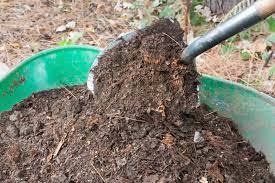
Yes, you CAN learn to compost. Here's how to begin.
All About Composting is a two-part series where you learn all about composting. In Part 1, you learned what compost is and why it’s important to compost. In this second part of the series you’ll learn how you can start composting at home.
Step 1: Separate organic waste from inorganic waste
Separate your organic (food and garden) waste and your inorganic waste (plastic, metal, glass). As a simple rule of thumb, organic waste is everything that was once alive or came from a living thing. Use the items in your organic waste bin to make compost. Make sure all the organic waste is all in small pieces, as larger items will take too long to break down.
Step 2: Prepare a space to make your compost
The best location to make your compost is outside, in a well-drained spot. You can either make your compost in a hole in the ground or in a container. The size you need will depend on how much organic waste you create. A hole should be at least 20 inches deep, and as wide as you like. A container can sit on top of the soil or be buried fully or part way. It will need small holes in the bottom and sides to let air in and water out. It might also need a cover so that it does not attract flies or rats or other pests, and so that it stays dry during heavy rain.
Step 3. Start your compost pile
After you have decided on a space and a container, you can fill your hole or container with your organic waste. Always start with a base layer of some loosely packed “brown” material like small twigs and branches at the bottom and cover this with leaves. Then you can add the rest, trying to keep a good balance of “brown” and “green” waste.
Green material provides the compost with nitrogen. Examples of green material include fruit and vegetable peelings, egg shells, coffee grounds, leftover food, fresh garden waste and chicken feces. Never put cat or dog feces into you compost because this can lead to contamination of your pile. Brown material provides the compost with carbon. Examples of brown materials include shredded plain paper and cardboard not coated in plastic, dead or dry leaves/glass, twigs and dead plant stalks, coconut husks, sawdust and cotton wool.
Keep the layers loose because the compost pile needs air to work. Your compost should be damp, but not soggy. If your waste is dry, you can sprinkle it with a little water. When you are finished, cover the container or put a layer of soil on top of the hole.
Step 4. Monitor your compost
Compost contains many living organisms that need care. Feed them regularly with new organic material and mix or turn your compost at least once every week with a garden fork. If it looks dry, sprinkle it with water to make it moist, and add green material. If it gets slimy or smelly, mix in dry brown material like dead leaves or shredded paper.
Step 5. And when it's ready, use it
Compost can take a few weeks or a few months to be ready depending on the weather and what you put in. Typically, organic matter will break down faster in a hot climate. You will know your compost is ready for use when it looks, feels and smells like rich dark earth rather than rotting organic matter. It should be dark brown, crumbly and smell like earth.
For more information on composting, compost bin layout and the pros & cons of compost bins, please visit the Rutgers Master Gardeners of Mercer County Website.
For ideas on DIY Compost bins, please visit the Daily Gardener Website.
For more other ideas on how to reduce your waste, please visit Trash Hero.
|